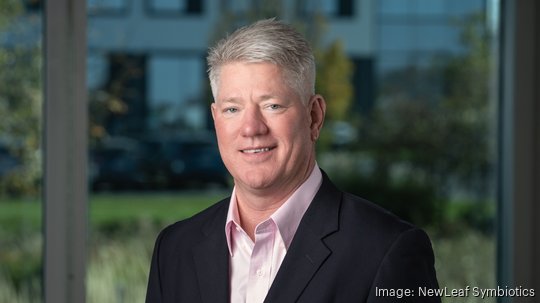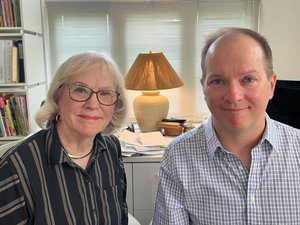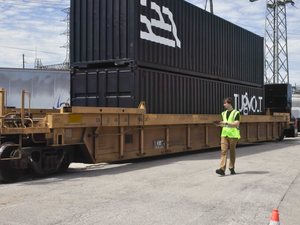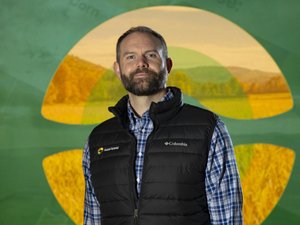
Agricultural biotech company NewLeaf Symbiotics is working to quantify atmospheric gas mitigation properties of multiple rice plant growth promotion technologies via methanotrophs, a class of microbes, in preparation for field trials.
NewLeaf is paying the U.S. Department of Energy (DOE) Joint Genome Institute at the Lawrence Berkeley National Laboratory to do the work, officials said this week.
The goal is to find good data about utilizing microbes that can both cut methane emissions from rice production and improve the fields' nitrogen usage, upping yields and decreasing the need for fertilizers.
NewLeaf, based in Creve Coeur's Donald Danforth Plant Science Center, focuses on developing and commercializing products containing a closely related kind of bacteria, pink-pigmented facultative methylotrophs, that metabolize methane, a greenhouse gas, and are designed to improve crop nutrition and yield.
“This partnership will enable us to deliver quantifiable insights for these strains, which could make a major impact in rice production in the future,” Dawn Chiniquy, the project’s principal investigator and a research scientist in Berkeley Lab’s Biosciences Area, said this week in a press release.
Because rice is grown on flooded fields, oxygen doesn't enter soil, creating a breeding ground for methane-producing bacteria. The Food and Agriculture Organization of the United Nations found last year that rice paddies produce 8% of all human-made methane emissions.
"It's basically a fee for service," NewLeaf Chief Technology Officer Shawn Semones said of the lab contract, in a phone interview. "We basically are contracting them to do research for us in an area where they have expertise, capabilities and resources. In return, we pay them for that service."
The work in Northern California will determine whether microbes NewLeaf has selected mitigate methane conditions from rice farming and increase nitrogen-utilization efficiency. Once they have laboratory data, NewLeaf will test findings in field conditions, which costs more money.
"We don't want to jump right to the field with a whole bunch of candidates. We're a startup company; we don't have that kind of footprint," he said. "It's better to establish that proof of concept in a small-capacity system. Once we know that this is a real thing, we'll move it onto the field system."
Berkeley Lab, in the San Francisco Bay Area, has fabricated ecosystems that measure plant emissions as they grow.
"For us, it's extremely convenient," Semones said. "We want to demonstrate, in a modeled rice system, there's methane emissions. And instead of that methane escaping into the atmosphere, that methane is being consumed by our microbial technologies and converted into a less-damaging format, more like microbial biomass."
He declined to discuss financial terms of NewLeaf's two-year agreement with the national lab.
Many methanotrophs are also nitrogen-fixers; Semones said NewLeaf wants a technology for rice farmers that improves their agricultural yield while also decreasing the amount of fertilizers needed, all while lowering methane emissions. (Fertilizer production is also strongly tied to global warming in addition to other environmental concerns.)
In addition to quantifying the atmospheric gasses, the Berkeley Lab team will explore additional attributes of the interactions between methanotrophs and rice. They will see how well methanotrophs colonize the tested rice plants and if the methanotrophs affect them.
"We think it's a very attractive value proposition; i.e., the farmer gets increasing grain yields, which means a greater return on investment. They might be able to cut back on their nitrogen budget by 10%, maybe more," Semones said. "And then, oh by the way, you're farming in a more economically sustainable fashion. While there's currently not an MRV model, where you measure, record, verify and ultimately monetize (through carbon credits), we are working with entities to establish that platform. There could be a future state where the farmer is compensated for the savings on methane emissions or the carbon-intensity aspect of his farming conditions."
NewLeaf is currently doing rice agricultural research in Thailand and Ukraine and expanding its business footprint into Canada, Brazil, Argentina, Paraguay, Uruguay and Bolivia, Semones said.
Separately, NewLeaf announced earlier this month that Greg Thompson, CEO of California-based agtech firm Intrinsyx Bio, had joined its board as an independent director. NewLeaf officials said Thompson’s commercialization and collaboration experience will help expand the reach of its TS201, a bioinsecticide to repel corn rootworm larvae at the root that it launched earlier this year, and other NewLeaf products.
The company raised $45 million in Series D funding in December to target product expansion and international growth, aiming for profitability.












